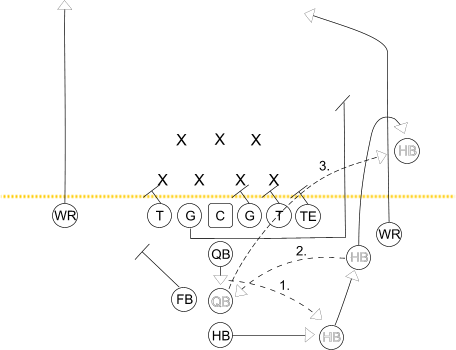8 Steps for successful
asset allocation strategies
Asset allocation strategies are the second synapse for successful investing when synched with sound knowledge and disciplined behavior.
Asset allocation simply means what investments and how much you include in your portfolio. It is the outcome of a selection process that will determine success or failure.
"Fortune favors the prepared mind" -Louis Pasteur
Louis Pasteur's quote is powerful because it inspires a positive mindset, but no doubt you have also heard this quote attributed to Benjamin Franklin: "Failing to plan is planning to fail". But most people immediately lose interest any time the word "plan" comes up when related to investing. This is natural when we don't feel we have sufficient knowledge or guidance. Imagine you are asked to prepare a meal for an important event but you don't know anything about cooking? How would you feel? Probably paralyzed and willing to do anything NOT to plan the meal, including to ignoring it and throw something together that seems "good enough". We commonly treat our investments the same way, preferring not to plan at all rather than spending time to seek out the information we need. We don't deal well with uncertainty.
But how would you feel if those responsible for your company pension or the portfolio managers of your 401(K) mutual funds operated the same way? We are much too lenient on ourselves compared to what we expect from others in regards to our investments. We must become the administrators of our own asset allocation strategies and hold ourselves to a professional standard, or hire someone with the competencies we lack. More often the latter choice is better but even then, it helps to know what to expect from those we hire.
having a solution is not the same as having a strategy
Consider some of these more common ad hoc investment "strategies":
- Equity allocation (stocks) = 100% - your age. (the rest in bonds)
- Simple 60/40 split between stocks and bonds
- Equal weight across all assets classes offered (a common strategy in 401(k) plans)
- Invest on hot tips and magazine articles
- Invest in a single "everything" fund (risk-based or target-date)
Are these really strategies? No, they are solutions, but not strategies, and as solutions, some are better than others but all are sub-optimal to well thought-out asset allocation strategies that reflects your particular situation and gives you a roadmap to navigate future events.
Why are asset allocation strategies important, anyway?
 Does your portfolio resemble a well-ordered cutlery drawer.... Does your portfolio resemble a well-ordered cutlery drawer.... |
 ....or a neglected junk drawer? ....or a neglected junk drawer? |
The output of asset allocation strategies is the investment portfolio. A portfolio simply refers to the collection of all your investable assets. It should look like the utensil drawer in your kitchen where every element from soup spoon to meat cleaver is designed to do something different, has a clear function and all work together to prepare and serve a meal. Instead, too many people's portfolio resembles a junk drawer housing broken tools, oddities we aren't sure what they do and things we found laying around we think might be useful...some day.
The portfolio construction process centers on how you allocate your investable assets. HOW means both:
1) What you are investing in.
2) The decision process used to select those assets.
the four cardinal rules of investing
 Diversify Diversify |
 Avoid Noise-Trading Avoid Noise-Trading |
 Rebalance Regularly Rebalance Regularly |
 Have a plan Have a plan |
follow a professional process
Institutional investors like foundations and corporate pension plans and large private investors like family trusts follow an broad and robust process to construct a successful investment portfolio based on robust asset allocation strategies, and a well-defined plan to manage the process.
Advantage of following a professional method:
- Grounded in sound theory, tested over time in the marketplace
- Be in good company following the asset allocation strategies of successful institutions
- Confidence; your investment plan is your Standard Operating Procedure (SOP) for dealing with challenges
The Investment Synapse helps you understand professional asset allocation strategies which you can either implement yourself or use it to oversee an experienced professional who is helping you. The following steps are widely used by successful institutional investors and can be adapted to your own personal investments.
The 8 steps of professional investment planning
1) Write your Philosophy of Wealth or Personal Wealth Statement
Often neglected or marginalized, your relationship to the wealth you have accumulated or are currently building will frame the decisions you make about how to invest. How did you acquire your wealth? How open are you about your wealth with family and friends? In your community or workplace? With the public in general? Do you view your wealth as a goal unto itself or merely a tool to achieve other goals? What do you consider appropriate uses of your wealth? Inappropriate? What does your wealth represent to you? hard and diligent work? An ongoing family legacy? a temporary store of value for future consumption?
The first step in the portfolio construction process is to understand what your money means to you, where it came from, the values it represents and your ultimate goals and hopes for its disposition. Although not a legal document, a Personal Wealth Statement can be used alongside your other financial documents to provide insights into your intentions with your wealth to your heirs or even to remind your future self.
Institutions do something similar with their Mission Statement which defines the purpose for the pool of money being administered and aligns it with the institutions concerns and values.
The Investment Synapse can help you develop your Personal Wealth Statement to the extent you desire.
2) State your goals and assess your risk tolerance
While the Personal Wealth Statement is qualitative in nature, capturing the gestalt of your wealth, in this next step definitive numbers are attached to specific goals and your capacity for risk is calibrated.
Even the best laid plan will fail if it is not executed properly. The greatest threat to your investment plan is not the markets nor the government, but yourself. We each have innate biases and make cognitive errors that lay in wait to ambush our portfolio. The act of identifying and counteracting these potential traps is called "debiasing" the portfolio.
The first step in debiasing is to be aware of the more predominant biases and errors and assess how prone you are to them. This can be done by informal reflection or, better yet, completing a behavioral bias survey. Just being aware of certain biases and behavioral traps in investing can go far to prevent them.
The second step is to systematically apply countermeasures to reduce or mitigate their influence on your plan. A sound investment process, articulated through a written plan, is crucial to maintain the discipline needed. Each identified cognitive bias be weighted by your personal survey and addressed in your plan.
The Investment Synapse considers the behavioral psychology of investing as a distinct input to the money synapse and devotes an entire section of this website exploring the research and neurological basis for these biases. The practical application of this information is captured here as the lessons from behavioral finance are incorporated into your investment plan.
4) Formalize your plan with a personal Investment Policy Statement (IPS) (with rebal policy)
This is the critical document that lays out the rules of the road for your investment plan. It is a central document with all serious institutional investors and is the primary reference for decision making.
Some of the areas covered by the IPS include:
1) Statement of Purpose, reflecting the points mentioned above
2) Roles and Responsibilities concerning your investment assets.
3) Allowed investment asset classes and constraints
4) Process to be followed for overall portfolio construction
5) Rebalancing policy
6) Monitoring and investment replacement plan
5) Portfolio Construction
The meat of the whole process. The more care and thought that is put into building your portfolio, the less likely you will be to get in your own way by tweaking or worse yet, abandoning, a long-term plan.
A good professional portfolio construction process will employ:
1) Capital Market Assumptions- Basic assumptions about expected return and risk for the allowed asset classes and how each one correlates, or co-varies, with the others. Ideal to use forward-looking assumptions and a long-term horizon (10 years minimum).
2) Strategic Asset Allocation - How much exposure to each asset class is optimal to maximize expected return for expected risk...within reason? How should you allocate with respect to your future cash flow needs? Here you define the asset allocation strategies best suited for you.
3) Tactical Asset Allocation - Should you partition part of your portfolio for shorter-term, opportunistic investing? If so, you better have a plan to govern it!
4) Cash Management Plan - How can you get the most of cash being reserved for spending needs or proper investment windows without undo risk exposure?
6) Security Selection
Either considered the "fun" part or dearly dreaded by investors, security selection is the kernel of portfolio construction for which the whole of investment planning hinges and prepares for. Important decisions are made in this step, enshrined in the IPS, regarding:
1) Self-management of security selection or use of third-party investment managers?
2) Investing passively with index funds or actively, seeking to add additional return performance above the policy benchmark index,,, and taking (and managing) the risk of underperformance?
3) Screening metrics to select third-party managers and funds (if applicable).
4) A manager/fund monitoring plan and watch/replacement triggers
7) Account structure & Execution
How will investment assets be allocated across accounts? How can tax-advantaged accounts best be used? Will new cash for the portfolio be invested immediately, partially invested at trigger points or systematically invested over a defined time period (Dollar Cost Averaging)?
8) Monitor & Review plan
Reviews should be made on three levels:
1) Every quarter or half-year, investment managers should be reviewed with an eye on long-term metrics. Replacement triggers should be defined in the IPS to avoid either knee-jerk reactions on the one hand and inaction on the other.
2) Every half-year or year, you should assess any changes in your life that could affect the primary assumptions, goals or risk tolerance guiding the plan inputs and adjust accordingly.
3) Every three years, the IPS should be revised and the full process renewed including risk and behavioral assessments, capital market assumptions updated, strategic asset allocation recalculated, all securities re-screened and any adjustments made.
Your portfolio should also be monitored for simple operational errors in account reporting and other events warranting immediate review such as a manager change in a fund, tender offers or changes in the legal environment affecting the assumptions of your plan. Almost always, market movements are NOT triggers for immediate change! Remember, the whole enterprise of the investment plan is to maintain a sure and steady hand through the inevitable market shocks.
The preceding steps are not unduly complex and it is certainly within your ability to develop your personal investment plan and asset allocation strategies yourself. However, if you recognize you do not possess any of the three critical elements, you will likely benefit from engaging professional services to guide you through the process:
1) TIME - Are you prepared to commit the time necessary to develop a sound investment plan or is your time better spent in other pursuits?
2) TOOLS - Do you have access to the information and analytic tools necessary? Are you willing to pay for subscription services to acquire them?
3) TALENT - Do you have confidence that your natural talents lend themselves to the proper level of financial planning and analysis necessary?
The Investment Synapse has spent over 10 years developing the tools and talents needed to serve clients and will make the time to help you!
